The Annual Arts Fuse Holiday Gift Roundup — Tips From the Experts
Wondering about what to give the arts and culture lover on your gift list? No problem—the sage writers for The Arts Fuse (with an assist from our readers) come to the rescue with thoughtful suggestions.
With gift season comes the existential quandary: What to give the culture lovers on your list? This season the writers for The Arts Fuse help fend off the crisis by recommending items that will delight the heart and stimulate the mind. Please feel free to add your own suggestions in the comments section.
Please keep in mind that if you order any of the following tips from this Amazon link (or use the link in the Amazon box at the top right of the page), The Arts Fuse receives a small percentage of the sale.
Of course, Arts Fuse writers have produced plenty of worthy stocking stuffers for discerning sensibilities. Fuse Book Critic George Scialabba has a new collection of incisive essays on issues cultural and political. Entitled The Modern Predicament, the volume is published by the excellent local press Pressed Wafer.
Fuse Arts Writer Helen Epstein is one of the honchos behind Plunkett Lake Press: eBooks of Life Writing. The venture specializes in books from and about Central Europe: authors include Stefan Zweig, Karen Horney, Marie Curie, Jan Masaryk, and Eva Hoffman. The volumes are easy to download and come with a $9.99 price tag.
Fuse Book Critic Jim Kates suggests that readers contribute to nonprofits. Besides supporting The Arts Fuse in its mission to generate independent and professional criticism of the arts in New England (and beyond), readers should consider contributing to Zephyr Press, which Kates helps run. Zephyr Press recently celebrated its 30th anniversary of “publishing outstanding literature from around the world.”
This page will be updated as more selections come in . . . .
Happy Holidays,
Bill Marx
Editor, The Arts Fuse
==========================================
A Pocket Philosophical Dictionary by Voltaire. Translated from the French by John Fletcher. Oxford University Press, 283 pages, $14.95.
Those who loved the first-rate production of the musical version of Candide at the Huntington Theatre Company earlier this season should pick up this marvelous volume of Voltaire’s sedition for themselves and friends. A collection of short and sly demolitions of conventional religion (particularly the Old Testament) and the intolerance it fosters, the book was designed for easy carrying and, if necessary, could be hidden from the censorious authorities with ease.
Here is a snippet from a chapter on “Fate”:
A man can have only have a certain number of teeth, horses, and ideas; and there comes a time when, of necessity, he loses his teeth, his horses, and his ideas.
This is the only English translation of the once controversial work available, a snappy, new version in a volume that includes an illuminating preface that points out the enduring relevance of Voltaire’s satire as well as a generous section of up-to-date notes.
The Devil’s Dictionary, Tales, & Memoirs by Ambrose Bierce. Edited by S. T. Joshi. The Library of America, 880 pages, $35.
In his tribute to Ambrose Bierce (1842–1913), H. L. Mencken laments that the latter’s best writing was not easy to find, most of it lost amid the forgettable piles of vituperative journalism larded into the 12 volumes of his Collected Works. The Library of America volume dedicated to Bierce is a useful step toward giving the admittedly difficult writer his due.
This year marks the 100th anniversary of the publication of Bierce’s notorious The Devil’s Dictionary, but thankfully the Library of America’s fat volume also includes Bierce’s considerable contributions as a journalist as well as a short story writer, social critic, political essayist, and Civil War correspondent. These literary accomplishments have been overshadowed by his reputation as a misanthrope and shrill cynic. Granted, Bierce’s image as a snickerer of genius is well earned: he is one America’s masters of snark, the journalistic/critical link between Edgar Allan Poe and Mencken, the imaginative predecessor to Nathanael West and Kurt Vonnegut. The latter admiringly wrote that Bierce penned “beautiful abuse.”
But, as the Library of America volume suggests, Bierce could do more than whip up insults beautifully. Unfortunately, his sardonic tirades and sour wit, dark japes aimed at religion, politics, and human nature, continue to shape his critical and popular reception: he is an established author, yet there remains ambivalence about his literary value. (Unlike his competitor, Mark Twain, Bierce didn’t have a lovable side to mitigate his image as a scold.) Bierce is one of those writers who is rediscovered from time to time, only to slip back into the margins.
The truth is, Bierce’s satire is only a part of his intermittently brilliant achievement. This judicious selection of his writings, especially his short stories, shows off the moral and compassionate energies that propel the furious vituperation in his commentaries. He was the only major American author to serve in the Civil War, and his reporting, including about battles he participated in, such as Chickamauga, catch the chaos of that experience while his short tales of horror, with their tart, shocking visions of terror, place him as a major player in the evolution of the genre.
The Library of America volume includes difficult to find examples of Bierce’s autobiographical writing, such as his reflections on covering the Civil War and writing for William Randolf Hearst. With this material in mind, the infamous acerbity of his commentary, such as the The Devil’s Dictionary, takes on a more complex value—it reflects the frustrations of a man of reason bedeviled (perhaps traumatized) by a country’s dedication to irrationality, via war and the mainstream media.
Cinematic Hamlet: The Films of Olivier, Zeffirelli, Branagh, and Almereyda by Patrick J. Cook. Ohio University Press, 257 pages, $55.
A serious present for the Shakespeare enthusiast who loves the movies and revels in sharp-eyed comparisons between text and image. Cook’s book provides a meticulous scene-by-scene analysis of four film versions of Hamlet, a quartet that he argues are the most successful cinematic versions of the play. The volume is a testament to how the Bard’s most mysterious play inspires provocatively clashing visual interpretations.
Victor Halfwit: A Winter’s Tale by Thomas Bernhard. Translated from the German by Martin Chalmers. Illustrated by Sunandini Banerjee. Seagull Books, 208 pages, $25.
A gob-smacking picture book that is the perfect gift for admirers of the absurd whatever their age. Bernhard’s nihilistic yet poignant short story (only he could pull this combination off), penned in the mid-60’s, deals with a doctor who, while walking through a cold and murky forest one night on his way to a patient, bumps into a body lying motionless in the snow. Incredibly, the man is not dead—he is Victor Halfwit, and he only has two wooden legs (“the locomotive tore them from my body!”). The doctor discovers that Victor has gone to the forest on a bet for a new pair of books.
The colorful pictures provided by Indian artist Banerjee are playful, sometimes illuminating the text, often marching to their own drummer.
Those who want to look at a sampling of the pictures in Victor Halfwit should go to Banerjee’s Facebook page.
— Bill Marx
For the jazz lover on your list, why not buy local? Three outstanding CDs released in the past year will be welcome in any stocking.
Ecuadorean-born vocalist/bassist Alex Alvear is a gifted songwriter and arranger who has forged an unmistakable ensemble sound that serves up a unique “salad” of styles from all over Latin America and the Caribbean. It had been a decade since Alvear’s Mango Blue last set foot in a recording studio, but that didn’t in the least deter devoted followers from packing their performances year after year. Easily one of the best Latin jazz CDs of 2011 and filled with by now familiar tunes, Mango Blue’s long-anticipated second CD, Mango, was well worth the wait.
On Ibeji, saxophonist/flutist (and amazing piccolo player) Paul Lieberman draws on years of experience playing Brazilian music with an imaginative mix of Brazilian stylings of jazz standards and straight-up jazz versions of Brazilian standards, augmented by several fine, original compositions. Highlights include a whirlwind samba version of “I’ll Remember April,” his own anthemic “Voa livre,” and a transformation of Ivan Lins’s “Doce presença” into a slow dance classic to rival “At Last” and “Ooh, Baby, Baby.”
The third release from the invaluable New World Jazz Composers Octet, Breaking News, features this little big band’s current configuration (trumpeters Ken Cervenka and Walter Platt, reedmen Daniel Ian Smith and Felipe Salles, pianist Tim Ray, bassist Keala Kaumeheiwa, drummer Mark Walker, and percussionist Ernesto Diaz) in a hard-swinging program of works by Boston-area composers. Highlights include Ted Pease’s trilogy of tributes to Thad Jones, Billy Strayhorn and Bill Holman, Matthew Nicholl’s fleet and foxy “Poco Picasso,” and Felipe Salles’s touching “Children’s Waltz.”
If your pockets are a little deeper, the perennially exemplary Mosaic Records (based in Connecticut) released a couple of gems during 2011.
The fifth volume (all recorded in France) of their Jazz Icons series of DVDs includes the John Coltrane Quartet’s amazing Antibes festival performances from the summer of 1965 that feature the Quartet’s only live performances ever of “A Love Supreme” and “Ascension”—a peerless document of Coltrane’s accelerating musical evolution. A second find is a program of solo improvisations by Thelonious Monk recorded in a Paris television studio in 1969. Rounding out the collection of six DVDs are a 1959 set by Art Blakey and the Jazz Messengers, a 1971 gig by Chicago tenor man Johnny Griffin (with special guest Dizzy Gillespie), a fierce and spacious 1973 concert by the Freddie Hubbard Quintet, and a 1972 performance by the ever-surprising Rahsaan Roland Kirk.
Mosaic’s ongoing series of definitive, limited-edition box sets of meticulous remasterings of jazz classics filled a yawning gap in the jazz discography with its seven-CD compilation of The Complete Jimmie Lunceford Decca Sessions, covering Lunceford’s prime years of 1934–1945. This set brings Lunceford’s big band out from the shadows of his contemporaries Duke Ellington, Count Basie, and Chick Webb to showcase the ensemble’s virtuosic performances of arrangements by Sy Oliver, Willie Smith, Ed Wilcox, Eddie Durham, and the young Tadd Dameron and Gerald Wilson. These sessions add new depth to our understanding of the swing era at its peak and the subsequent transition to bebop.
These sets are both on my holiday wish list, and I’m quite certain I’m not alone.
— J. R. Carroll
The Last Sultan: The Life and Times of Ahmet Ertegun by Robert Greenfield. Simon and Schuster, 464 pages, $17.99.
A fascinating, critically admired look at the Turkish immigrant who created some of the most successful American and British acts of all time as head of Atlantic Records.
Midnight in Paris.
One of the most acclaimed films of 2011 as well as one of my favorites. Perhaps Woody Allen’s best in more than a decade—certainly worth having on DVD.
The Black Keys’ latest El Camino demonstrates a fuller sound for the blues/garage-rock duo that’s certain to expand the appeal of the charismatic duo to an even broader audience. Check them out at the TD Garden in March too.
— Michela Smith
This has been a very strong year for new classical recordings, a few of which are mentioned below. I will start, though, with an old friend of mine from 2001 that provides a nice contemporary antidote or counterpoint (depending on your mood) to the ubiquitous Messiah performances of the season. Enjoy!
John Adams, El Nino
Adams’s nativity oratorio, which premiered in Paris in December 2000, is essentially a Messiah for the new millennium. Its text draws on the familiar Biblical story, the Wakefield Mystery Plays, and several poems – including many by women authors – that meditate on birth, both Christ’s and, more generally, what Michael Steinberg calls “the inexhaustible miracle of birth.” The recording features the stellar cast that premiered the work, including Dawn Upshaw, Lorraine Hunt Lieberson, and Willard White; the Deutsches Symphonie-Orchester Berlin conducted by Kent Nagano plays this music like they’ve lived with it for years. Highly recommended.
John Adams, Son of Chamber Symphony/String Quartet
This is one of the most interesting releases of 2011, featuring the two sides of Adams’s musical personality. The first work, Son of Chamber Symphony (2007), is a sequel of sorts to the earlier Chamber Symphony (1992), and is filled with high energy, good humor, and, in its second movement, one of Adams’s most haunting tunes. The String Quartet (2008) is more ambiguous and given a powerfully assured reading by the St. Lawrence String Quartet.
Charles Ives, Violin Sonatas
Nearly every time Hilary Hahn comes out with a new album it’s worth paying close attention and this time is no different: America’s greatest young violinist takes on the four Violin Sonatas of the original American Maverick.
Franz Liszt, Piano Concertos nos. 1 & 2 (Barenboim/Boulez)
One of the most interesting pianist-conductor combinations around, Daniel Barenboim and Pierre Boulez take on the two concerti of this year’s bicentennial birthday boy, Franz Liszt. Also included is Consolation #3 and Valse oubliée #1.
Wolfgang Amade Mozart, Piano Concertos nos. 19 & 23
Helene Grimaud, one of the most thoughtful pianists on the scene today, released her first all-Mozart album earlier this year. Her cadenza choice in the concerti precipitated a falling-out with conductor Claudio Abbado, though there’s no sense of such tension in the recording. In addition to the concerti, the recording features soprano Mojca Erdman singing a selection of Mozart’s concert arias.
Gioacchino Rossini, William Tell
Remember a few years ago when Antonio Pappano’s recording of Tristan und Isolde heralded the end of studio opera recordings? Well, Pappano’s back this year with a phenomenal live performance of Rossini’s little-heard William Tell. The cast includes the superb baritone Gerald Finley; tenor John Osborn sings in the title role.
Pierre-Laurent Aimard, The Liszt Project
Points for the most creative commemoration of Liszt’s anniversary year must go to the extraordinary French pianist Pierre-Laurent Aimard, who has compiled a program pairing a wide range of Liszt (including the Sonata in B minor, La lugubre Gondola, and movements from Années de pèlerinage) with keyboard works by Bartòk, Berg, Messiaen, Stroppa, and even Wagner.
Alex Ross, Listen to This
Ross, who is the music critic at the New Yorker, scored a huge hit a couple of years ago with his excellent history of 20th-century music, The Rest is Noise. In this, his second book, he’s back with a compilation of essays that cover a wide range of genres, artists, and styles.
— Jonathan Blumhofer
On Dancer! Holiday gifts
Let’s take it for granted that your dancing fool already has a closet of dance company tee shirts, an “I’d Rather be Dancing” bumper sticker, and endless reproductions of Degas ballerinas. When you prop up gifts under the menorah or Christmas tree this season, try something a little different.
For your ballerina. Crazed by Kate Middleton’s bridal loan of the 1936 Cartier “Halo” tiara, little girls – and fabulous boys — may want to play prima ballerina with something from the Amazon based “Sparkly Crystal” shoppe …starting at about $12 (but what are the helicopters doing on the page? A reference to the manly Prince William?). More mature ballet fans will appreciate the gritty glamor of a photo of former New York City Ballet dancer Aesha Ash posing in her tutu on the streets of her native Rochester. With it, package Night’s Dancer, the biography of America’s first African-American prima ballerina, Janet Collins, who danced at the Metropolitan Opera (also available as an e-book). And for the ballerina with a sense of humor, an artist in LA is whipping up this image in totes, mirrors, and mouse pads.
For the lindy hopper. If Santa told me I’d been really, really good, I’d ask for an original Richard Yarde watercolor, but the social dancer on your list will enjoy the Massachusetts artist’s work in a print or even as a poster when you make a donation to the Frankie Manning Lindy Hop Legacy Fund.
For dancers on the edge. Visionary artist Meredith Monk’s “Songs of Ascension” will lead you into higher states of consciousness and Liz Lerman’s
Hiking the Horizontal shares provocative questions about what dance can be.
For the world dance enthusiast. Etsy showcased this amazing ceramic lantern by a Sardinian artist, Giommaria D’Angelo, who apparently writes little poems to go along with his creations. Another Etsy artist, Michala, in Gainesville, Florida has a passion for pendants made out of this-side-of-kitsch belly dance images. And talk about upcycling! I love these retro hand mirrors, just right for the flamenco fanatic who needs to check her stage makeup.
Dance to wear. You should never, never buy a dancer shoes –- they have to try them on –- but you can make a trip to great independent stores for that special something.
Teddy’s in Central Square serves the Cambridge dance crowd with a full array of dancewear while in Burlington, Back Bay Dancewear carries neato Grishko legwarmers whose pattern adds a dash of Puchinelle. For kneepads, look no further than the risk-taking Contact Improv folks at Contact Quarterly and while you’re at it, subscribe to their inventive magazine. For ornamentation, this critic likes the mix of words and implied movement in a Dance pendant made out of a Scrabble tile.
And don’t forget! Dance is a live art. Give the gift of tickets -– or even better, a season subscription to any of the fine dance presenters in our community -– and attend with a sense of adventure. After all, St. Nick named one of his reindeer Dancer.
— C2011 Debra Cash
Some of these gift selections were published a little earlier than 2011 and I caught up with them in the past year. All books are books, except The Alvin Ailey Dance Co.
The Hare with the Amber Eyes by Edmund deWaal, Farrar, Sraus & Giroux, 2010. A fascinating journey by a well-known English potter in search of his identity through the late 19th and early 20th centuries, tracing back to the fabulously wealthy Jewish family, the Ephrussi clan from Odessa. Filled with tenderness and surprise, it is a marvelous read.
The Grief of Others by Leah Hager Cohen, Riverhead, 2011. Despite its somewhat uninspired title, this is a compelling novel of modern American suburbia where the past rises up so sharply that it seems to slap the characters and the reader in the face.
Every Man Dies Alone by Hans Fallada, Melville House, 2010. Written by Rudolf Ditzen who took the pseudonym Hans Fallada, this amazing novel was first published in 1947. Based on true events and beautifully translated by Michael Hofmann, it was called by the stupendous Primo Levi, “the greatest book ever written about German resistance to the Nazis.” A wonderful reissue for which we should all be grateful.
For those interested in the intricate relationships of transplanted Brits to Africa’s “Happy Valley” in the 20s and 30s, there are The Bolter by Frances Osborne, Vintage, 2008 about Idina Sackville Gordon and The Temptress by Paul Spicer, St. Martin’s Press, 2010 about Idina’s friend, Alice de Janze. Read as a pair these fine biographies give one some added perspective on that seductive time and place first brought to the fore in a more literary way by Karen Blixen.
Van Gogh, A Life by Steven Naifeh and Gregory White Smith, Random House, 2011. A superbly researched and considered examination of the life of Van Gogh that is a wonderful accompaniment to his letters and really digs deeply into what made this complicated artist so unique. It recognizes his intellectual accomplishments, which are at least as important as his difficulties, and gives him his true place as one of the great men of the 19th century.
And, lastly, for books, I repeat last year’s recommendation of The Memory Chalet by the incomparable Tony Judt (Penguin Press, 2010) who died so tragically in August 2010 of ALS at the far too young age of 62. This is a book to be cherished by anyone interested in values and the history of the 20th century. A wonderful gift for children and grandchildren entering adulthood.
For those coming to New York there is the wonderful Alvin Ailey Dance Company, which seems to have taken a new lease on life under the direction of its new director, Robert Battle. We loved a program that included the poignant “Home” and the unforgettable “Minus 16,” but i suspect any evening spent at the recently renovated City Center with this terrific company will have remarkable rewards.
— Roberta Silman
Tagged: & Memoirs, A Pocket Philosophical Dictionary, Alex Alvear, Ambrose Bierce, Branagh, Cinematic Hamlet: The Films of Olivier, Jimmie Lunceford, John-Coltrane, Library-of-America, Mango Blue, Mosaic-Records, New World Jazz Composers Octet, Patrick J. Cook, Paul Lieberman, Tales, The Devil's Dictionary, Thelonious Monk, Thomas-Bernhard, Victor Halfwit: A Winter's Tale, Voltaire, and Almereyda, arts, gifts, holiday


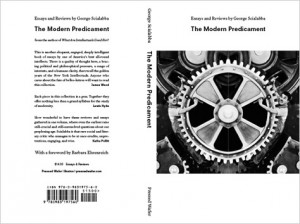




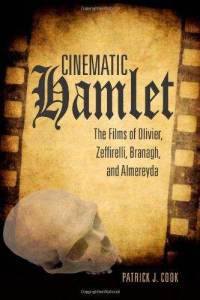


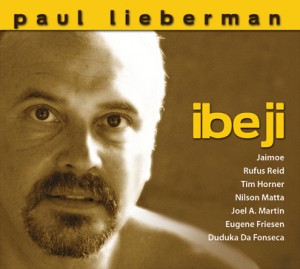


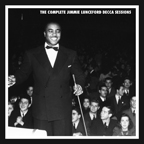
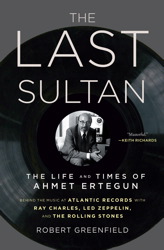
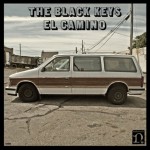
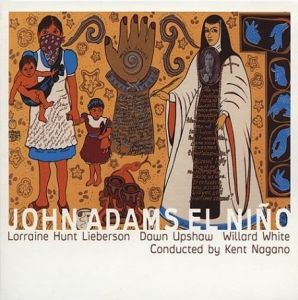
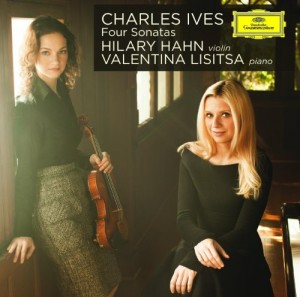
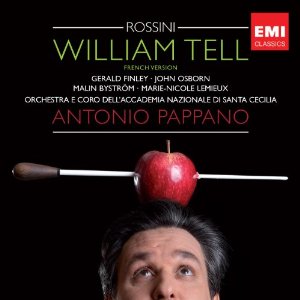
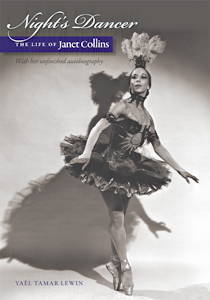
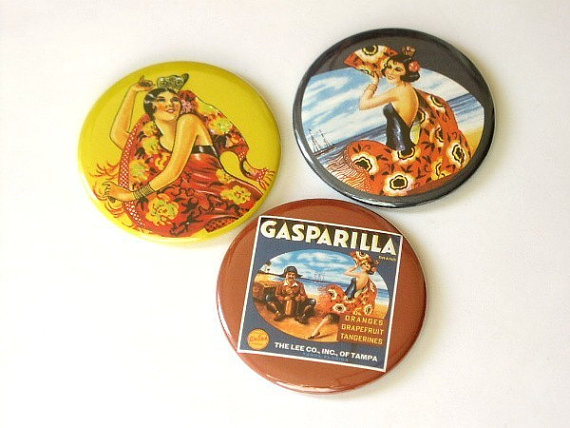

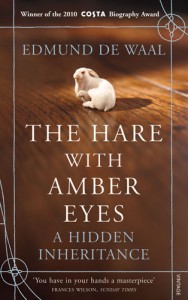
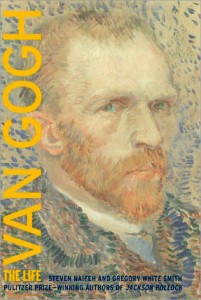
Some great suggestions here.
Another possibility: “Tantra Song” (Siglio), available at Amazon.